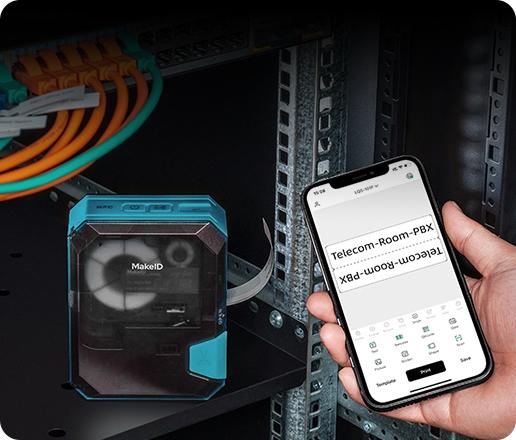In the telecom industry, where assets like base stations, fiber optic cables, and network routers span vast geographic areas, digital transformation is no longer an option but a necessity. At the heart of this shift lies a seemingly simple tool: the label printer. Far beyond just creating physical tags, modern label printers bridge the gap between physical telecom assets and digital management systems, unlocking efficiency, accuracy, and visibility. Below’s how they drive key aspects of digital transformation in telecom asset management.
1. Creating a "Digital Identity" for Physical Assets
Telecom assets start as physical objects—but without a digital link, tracking them becomes a manual, error-prone process. Label printers solve this by generating smart labels (equipped with barcodes, QR codes, or RFID chips) that act as unique "digital IDs" for each asset. These labels encode critical data: asset serial numbers, installation dates, location coordinates, and maintenance histories.
When scanned with a mobile device or RFID reader, this data instantly syncs to cloud-based telecom asset management platforms (TAMPs). For example, a technician installing a 5G base station can scan the label on-site, updating the asset’s status from "in transit" to "deployed" in real time. This eliminates manual data entry (a major source of errors) and ensures TAMPs always reflect the true state of assets. A 2024 study by Telecom Technology Forum found that smart labels reduced asset data discrepancies by 82% compared to paper-based tracking—laying the foundation for reliable digital management.
2. Streamlining Field Operations with Real-Time Data Flow
Telecom technicians often work in remote or harsh environments (e.g., cell towers, underground cable vaults), where accessing digital asset data can be challenging. Label printers, paired with portable devices, enable on-the-go digital collaboration. For instance, if a technician discovers a faulty router during a site visit, they can use a portable label printer to generate a new "needs repair" label, scan it, and trigger an automated work order in the TAMP. The maintenance team receives the alert instantly, avoiding delays from manual report submissions.
This real-time data flow also simplifies audits. Instead of manually checking hundreds of assets across a region, auditors can scan labels to verify asset existence, location, and condition—cutting audit time by 50% or more, according to a case study from a leading European telecom provider. By making field operations digital-first, label printers eliminate bottlenecks in asset management workflows.
3. Enabling End-to-End Asset Lifecycle Digitalization
Digital transformation in telecom asset management requires visibility across the entire asset lifecycle: from procurement to deployment, maintenance, and retirement. Label printers tie each stage to a unified digital thread.
- Procurement: New assets receive labels with purchase order numbers, linking them to digital invoices in the TAMP.
- Maintenance: Every repair or upgrade is logged by scanning the asset’s label, creating a permanent digital maintenance record.
- Retirement: When an asset is decommissioned, scanning its label updates its status to "retired" and triggers compliance checks (e.g., data wiping for sensitive equipment).
This end-to-end digitalization prevents "asset ghosts" (assets listed in the TAMP but no longer in use) and ensures compliance with industry regulations. For example, telecoms handling customer data can use label-linked digital records to prove assets were properly disposed of—avoiding costly fines.
Conclusion
Label printers are far more than peripheral tools in telecom asset management: they are catalysts for digital transformation. By creating digital identities for physical assets, streamlining real-time data flow, and enabling lifecycle digitalization, they turn disjointed, manual processes into a cohesive, data-driven system. As telecoms expand their 5G and 6G networks, the role of label printers will only grow—helping them manage larger, more complex asset portfolios with speed and precision. In short, no telecom digital transformation strategy is complete without integrating smart label printing technology.

